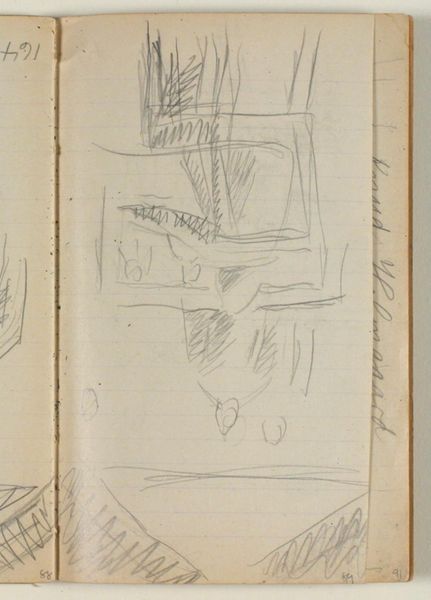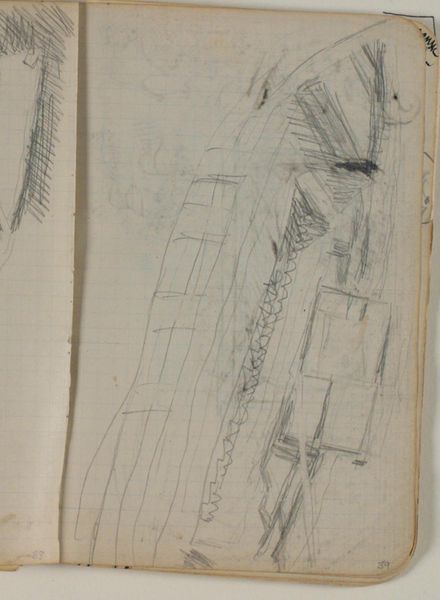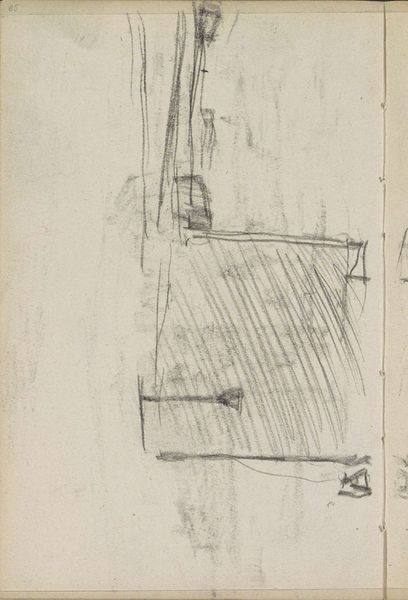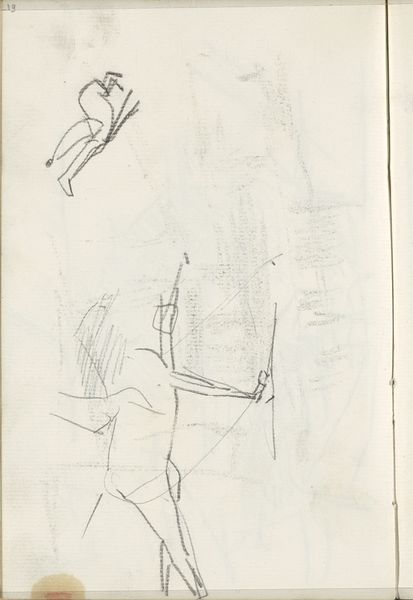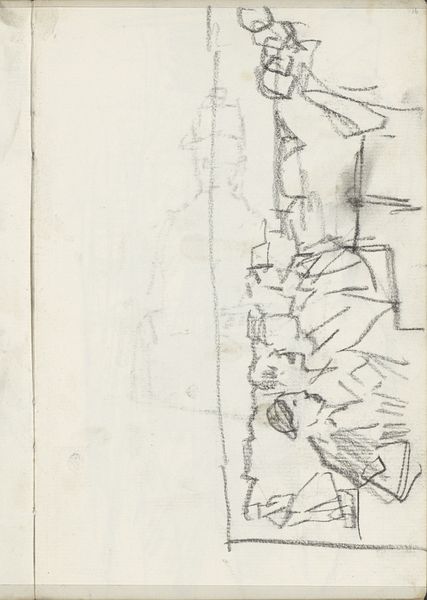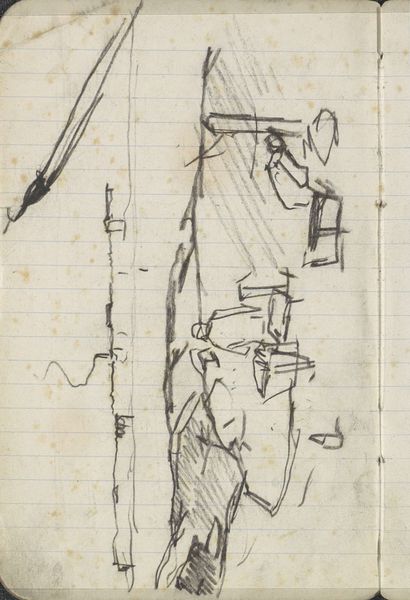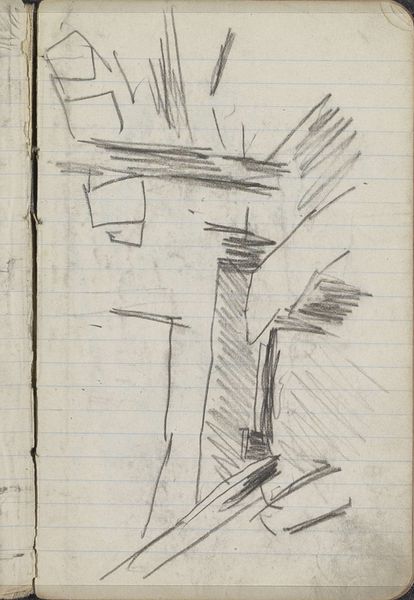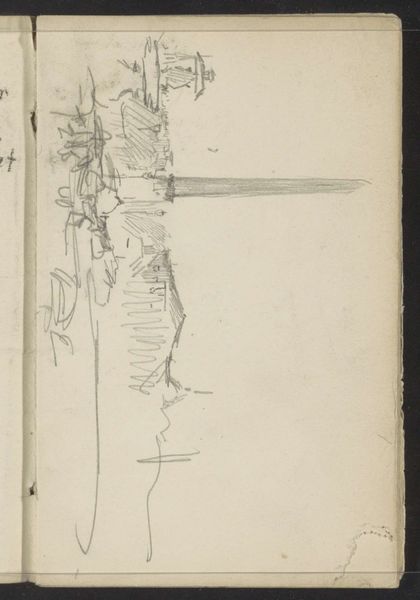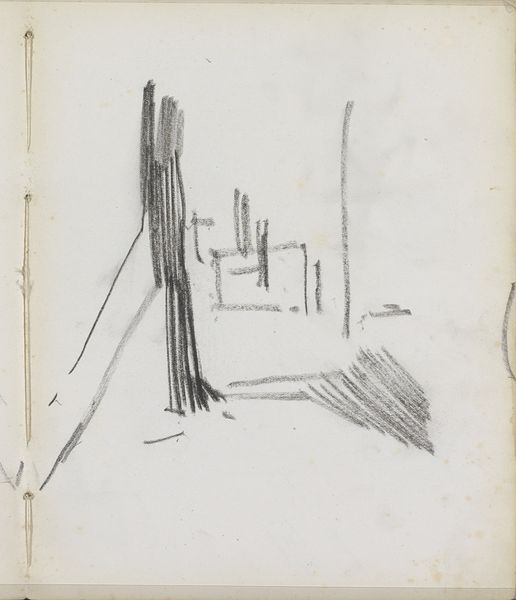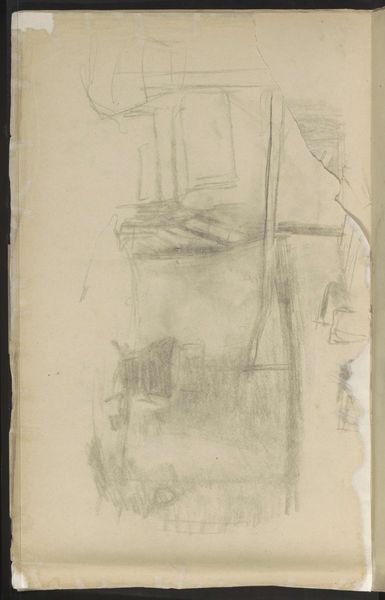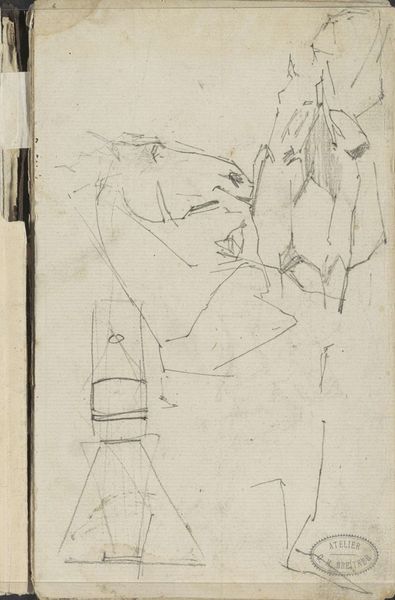
Dimensions: 169 mm (height) x 109 mm (width) x 5 mm (depth) (monteringsmaal), 169 mm (height) x 109 mm (width) (bladmaal)
Curator: We are looking at "Skitse af en ulv. Notater," a pencil drawing on paper created between 1905 and 1907 by Niels Larsen Stevns, part of the collection at the SMK, the National Gallery of Denmark. The sketch gives the initial impression of being dominated by nervous energy. The strokes are quick and scribbled. Editor: The wolf as an archetypal figure embodies the wild, the untamed. It resonates deeply within our collective unconscious, a potent symbol often associated with both danger and freedom. I sense both in this composition, even in its abbreviated form. Curator: Note how the artist's hand rapidly articulates form. Observe the insistent rhythm of repeated pencil strokes, built up in layers to create volume and shadow. We can trace the artistic process itself; the structural decisions happening before our eyes. Editor: It is interesting to consider the wolf’s dualistic nature as depicted here. Wolves can signal loneliness, the outcast, but also a deep connection to family. This wolf figure blends those feelings, and seems to observe, ready to retreat into the shadows. The medium, pencil on paper, adds to this transient feeling, like it could all be erased at any minute. Curator: The relatively spare landscape adds to the sense of a preliminary study; attention is primarily directed toward the contours of the animal, achieved through dynamic juxtaposition and swift tonal gradation. This allows us to follow the artist's methodology. Editor: Absolutely. And wolves, historically, have held sacred places in many cultures—associated with creation myths or embodying protector spirits. Seeing how Stevns approaches the subject with sensitivity opens many interpretive routes that blend nature and imagination. Curator: By analysing the balance between detail and abstraction, we come to appreciate the way Stevns captures not merely the external representation of an animal, but also, by focusing on the core shapes and tonal qualities, an impression of its intrinsic nature. Editor: Looking at Stevns' study through a symbolic lens brings so many aspects into view – not just the drawing in front of us but thousands of years of cultural and spiritual resonance related to the wolf. Thank you for providing clarity on how the artwork came to be through formal observations.
Comments
No comments
Be the first to comment and join the conversation on the ultimate creative platform.
